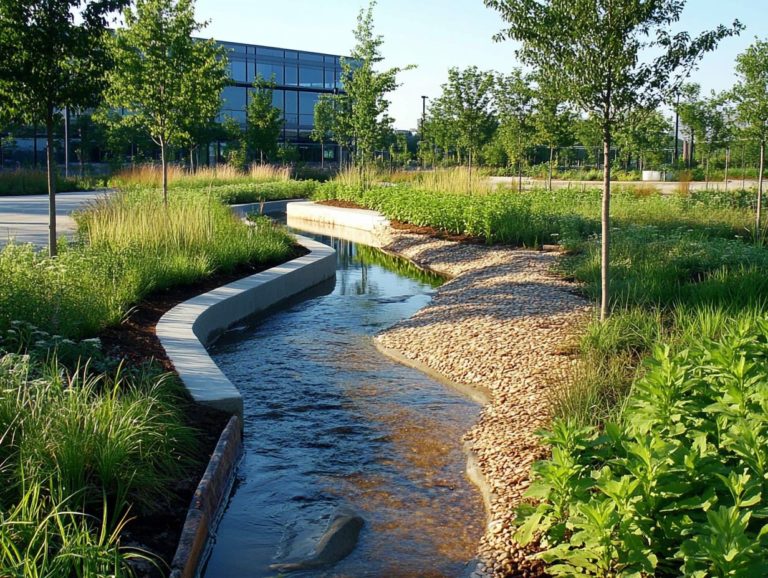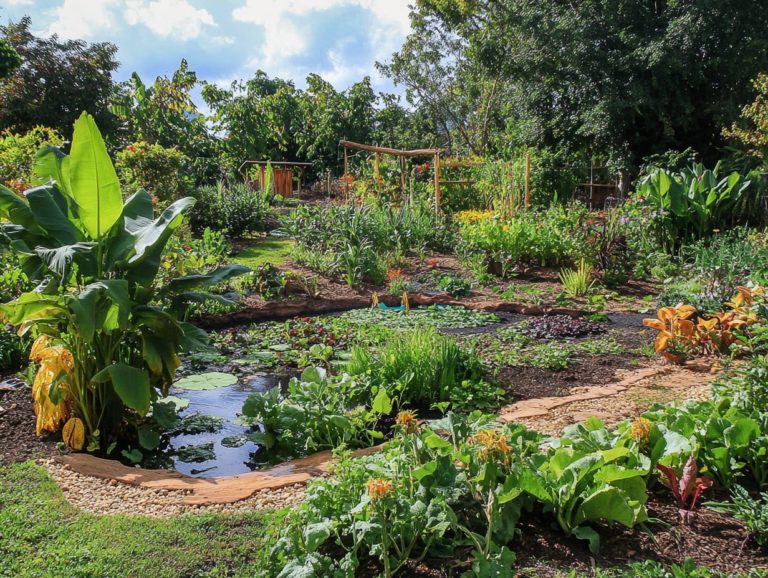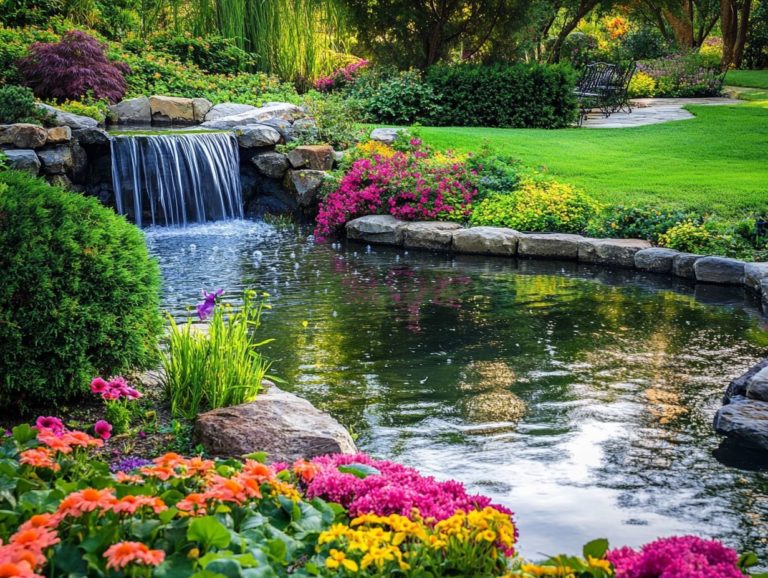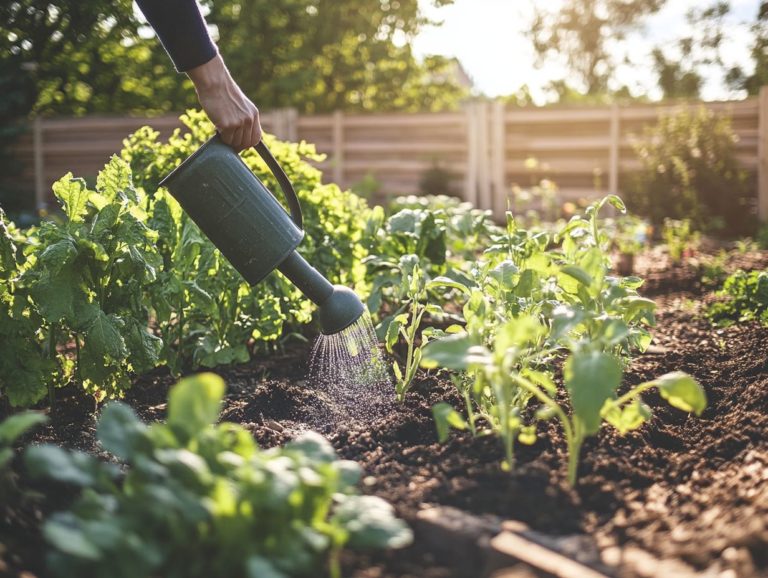How to Create a Sustainable Water Cycle at Home
Water is crucial for life. However, its scarcity is becoming an alarming global issue.
To truly appreciate nature’s processes and take meaningful steps toward sustainability, understanding the water cycle a limited supply crucial for our ecosystems is vital.
This article presents practical strategies for water conservation, offering tips on reducing usage, harvesting rainwater, and recycling water.
It also guides you in creating a personalized water management plan that can help you cultivate a more sustainable lifestyle at home.
You can make a huge difference starting today! Discover how you can contribute to local economies and sustainable practices!
Contents
- Key Takeaways:
- Understanding the Water Cycle
- Ways to Conserve Water
- Harvesting Rainwater
- Recycling Greywater
- Creating a Home Water Management Plan
- Frequently Asked Questions
- What is a sustainable water cycle and why is it important to create one at home?
- How can I collect and store rainwater for my sustainable water cycle at home?
- What are some simple ways to purify and filter water for a sustainable water cycle at home?
- Can I reuse greywater in my sustainable water cycle at home?
- How can I reduce my water consumption and promote a sustainable water cycle at home?
- What are some additional benefits of creating a sustainable water cycle at home?
Key Takeaways:
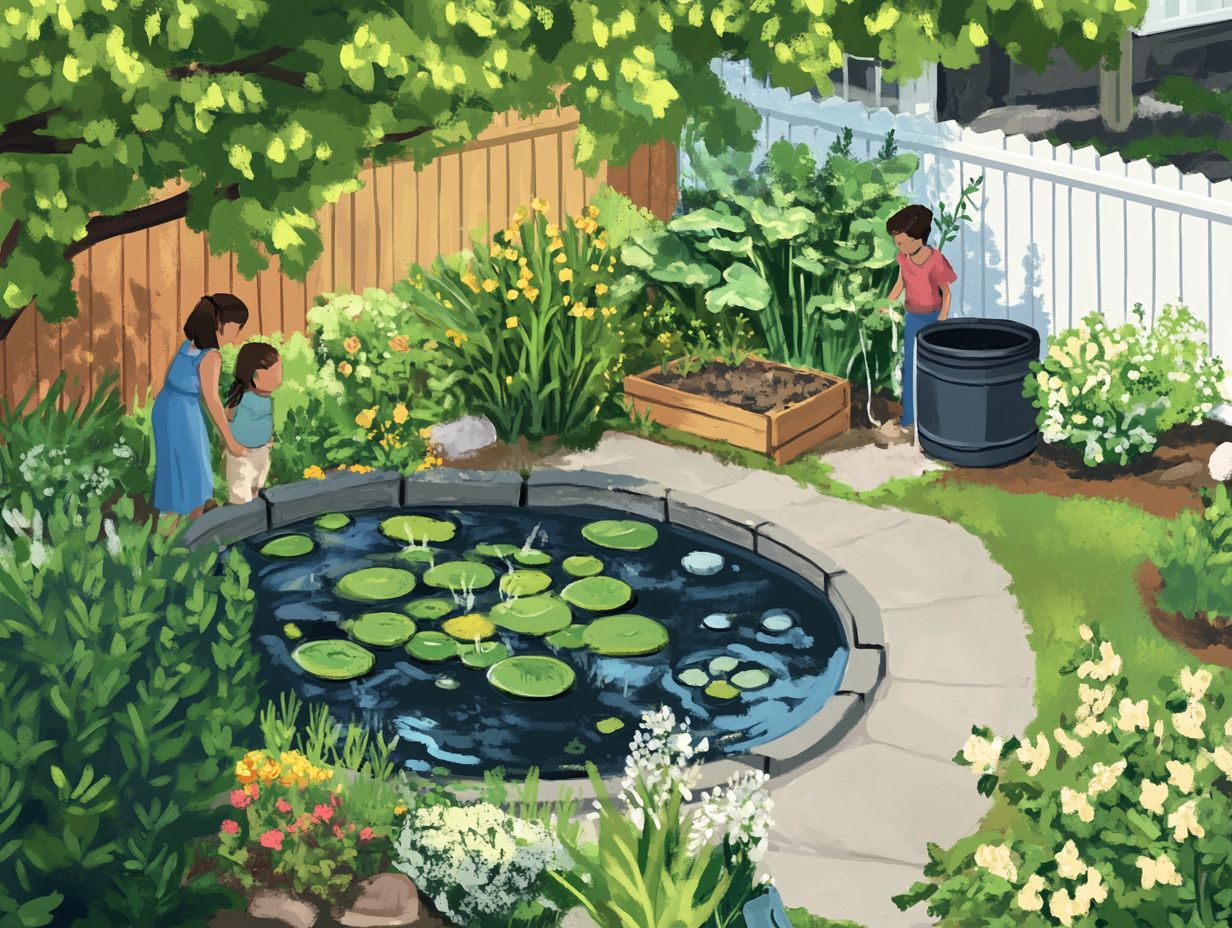
- Be mindful of your water usage and implement practical tips to conserve water.
- Consider using rain barrels to save on your water bill.
- Reuse household water through greywater recycling, which involves treating water from sinks or baths for reuse.
Understanding the Water Cycle
The water cycle is an essential process that showcases how water a limited resource crucial to life constantly transitions through various forms and locations, such as underground reservoirs and freshwater lakes. This continuous movement is vital for maintaining ecological systems, including vital freshwater lakes, habitat regeneration, and biodiversity.
By ensuring the availability of clean drinking water and potable water for communities, the water cycle significantly contributes to climate regulation and ecological integrity. Its effects reach far and wide, influencing everything from local agriculture to urban water dynamics, especially in regions like Lake Erie.
Overview and Importance
Understanding the water cycle is essential for appreciating the importance of clean drinking water and its role in sustaining ecological systems and community stewardship. This natural process does more than just influence weather patterns; it is fundamental in ensuring that urban infrastructures can meet the demands of a growing population.
Consider this: studies show that approximately 70% of global freshwater usage is tied to agriculture, including irrigation systems. This underscores the urgent need for effective water management to conserve this invaluable resource. Cities are increasingly embracing advanced water treatment technologies to reclaim wastewater, with some areas reporting that up to 50% of their water supply comes from recycled sources. This transformation not only helps communities thrive but also minimizes their ecological footprint, promoting resilience against future water shortages, especially in light of climate change.
Ways to Conserve Water
Implementing effective water conservation strategies is crucial in tackling the challenges presented by climate change and the limited supply of freshwater resources, including surface water. By doing so, you ensure that clean drinking water remains accessible for future generations.
Practical Tips for Reducing Water Usage
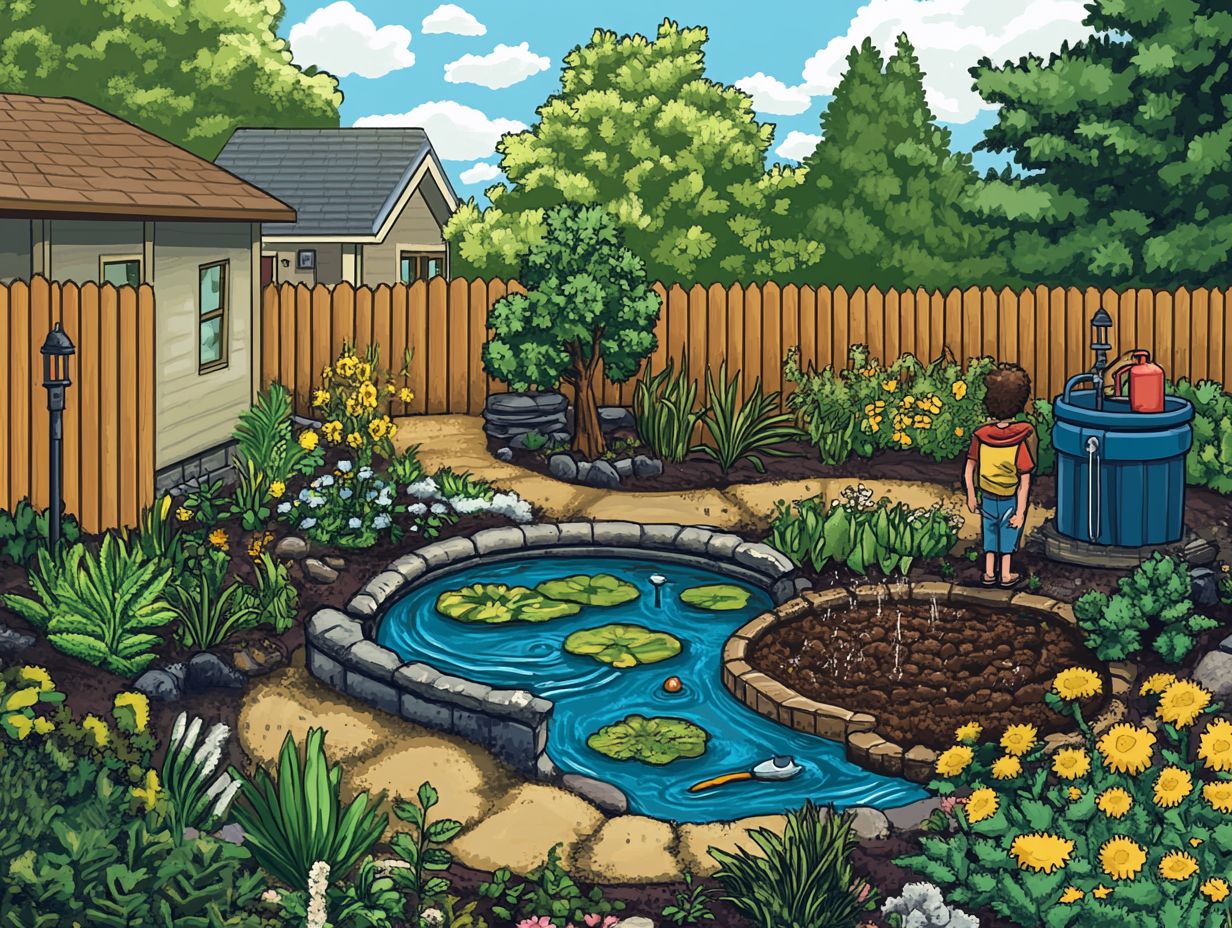
To effectively reduce water usage, adopt practical strategies like using water-efficient appliances, composting, and installing rain barrels. These small changes can have a significant impact on your overall conservation efforts.
Fix leaks promptly. Choose shorter showers to enhance your water-saving efforts. For businesses, implementing strategies like xeriscaping and creating rain gardens allows you to create stunning landscapes without relying on excessive irrigation.
By embracing composting, you not only minimize food waste but also conserve water by reducing the need for chemical fertilizers while nurturing healthy soil, which supports natural habitats. Whether at home or in a business setting, be mindful of water use during meal preparation like washing only the necessary amounts of produce at once to further support your conservation goals.
Harvesting Rainwater
Harvesting rainwater is an innovative and sustainable practice that enables communities to optimize their water resources and support habitat restoration. This is especially crucial in urban areas, where the urban water cycle often leads to increased runoff and the depletion of groundwater.
By embracing this method, you contribute to a more resilient and efficient water management system.
Benefits and Methods
The advantages of harvesting rainwater go far beyond simple water conservation. It enriches ecological integrity and encourages community stewardship through sustainable practices, benefiting local foods and urban infrastructure.
By adopting effective rainwater harvesting methods, such as rooftop systems and percolation pits, you can significantly reduce your reliance on municipal water supplies.
These systems capture runoff and reduce erosion, leading to healthier soil and flourishing vegetation.
The economic benefits are exciting and can lead to significant savings, especially in regions where water is limited. Reducing traditional sources can provide noteworthy cost savings.
Successful initiatives show how to capture and utilize rainwater effectively. They also instill a sense of communal responsibility, inspiring residents to actively participate in conservation efforts.
Recycling Greywater
Recycling greywater, which is water from sinks, showers, and washing machines, presents a simple solution for enhancing your water conservation strategies. It also helps improve community coalitions for sustainable practices.
By safely reusing household water, you can significantly decrease the demand for treated potable water, making a meaningful impact on sustainability efforts.
How to Safely Reuse Household Water
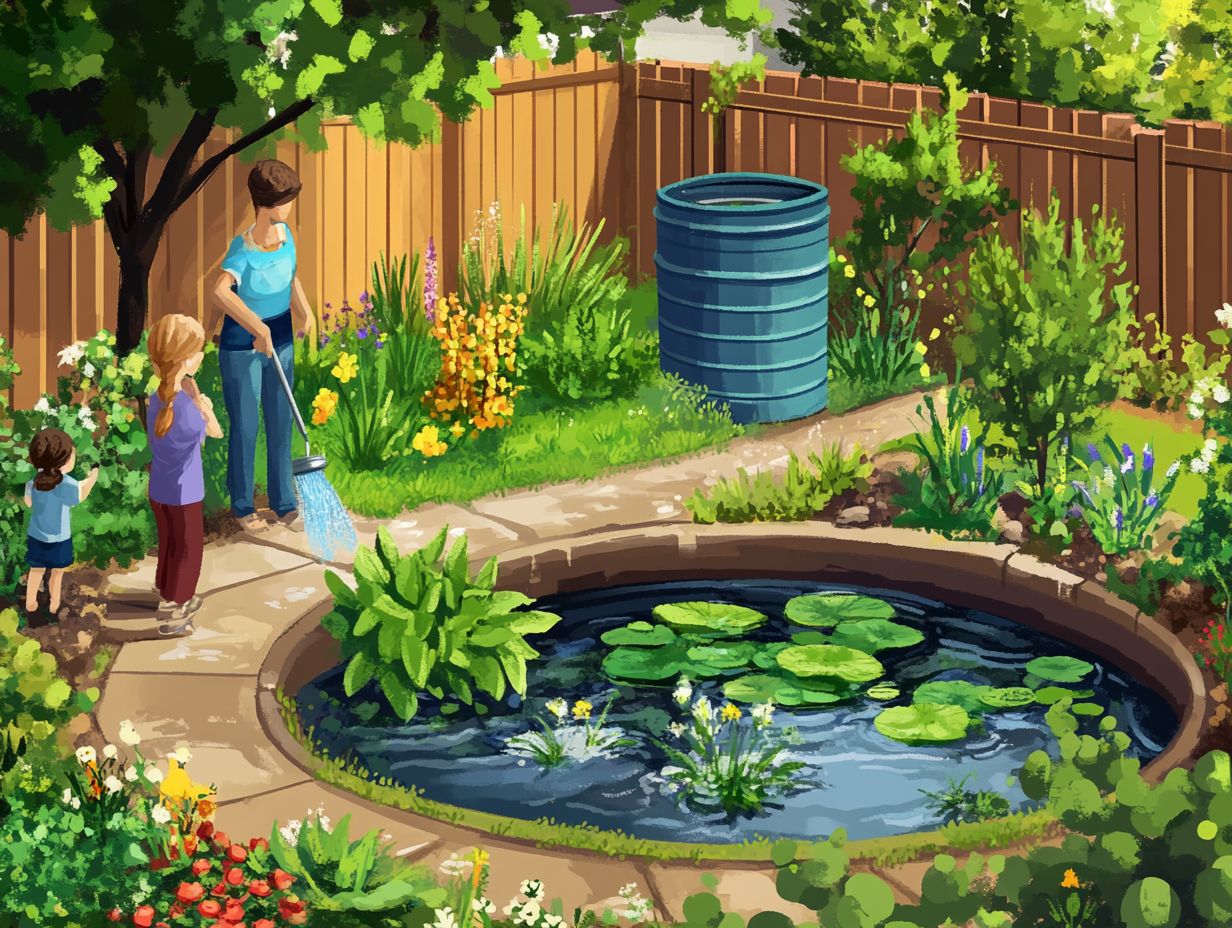
To safely reuse household water, implementing greywater systems and utilizing natural filters is essential. This ensures that the water is treated properly before you use it in your gardens or for irrigation.
This process not only conserves valuable resources but also alleviates the strain on municipal wastewater systems.
Start by assessing which sources of greywater like dishwater, laundry water, and shower runoff are suitable for reuse.
Next, prioritize a filtration system that effectively removes contaminants before directing the water to appropriate storage tanks. Regular maintenance of your greywater system is crucial to prevent any buildup of harmful bacteria.
When integrating any water treatment measures, such as adding natural filters or eco-friendly disinfectants, pay attention to local regulations for compliance and safety, especially in urban water cycles.
Creating a Home Water Management Plan
Developing a home water management plan is crucial for fostering sustainable practices that ensure efficient water use. This promotes water-efficient appliances and enhances your personal stewardship.
It also plays a significant role in protecting vital water resources, such as groundwater and surface water, for the community.
Steps for Implementing a Sustainable Water Cycle
Implementing a sustainable water cycle requires your active participation and a coordinated effort through community coalitions. These efforts enhance ecological integrity while ensuring efficient water treatment and pollution control.
Engage local residents and stakeholders to nurture a sense of ownership over water resources. By embracing practices like rainwater harvesting, rain gardens, native landscaping, and responsible waste disposal, you can significantly reduce your environmental footprint.
Educational initiatives that raise awareness about the water cycle and its impact on daily life will inspire you and others to get involved. Collaboration across various sectors government, businesses, and non-profits can streamline these efforts.
This can lead to comprehensive strategies that safeguard public water supply and promote long-term sustainability for future generations.
Frequently Asked Questions
What is a sustainable water cycle and why is it important to create one at home?
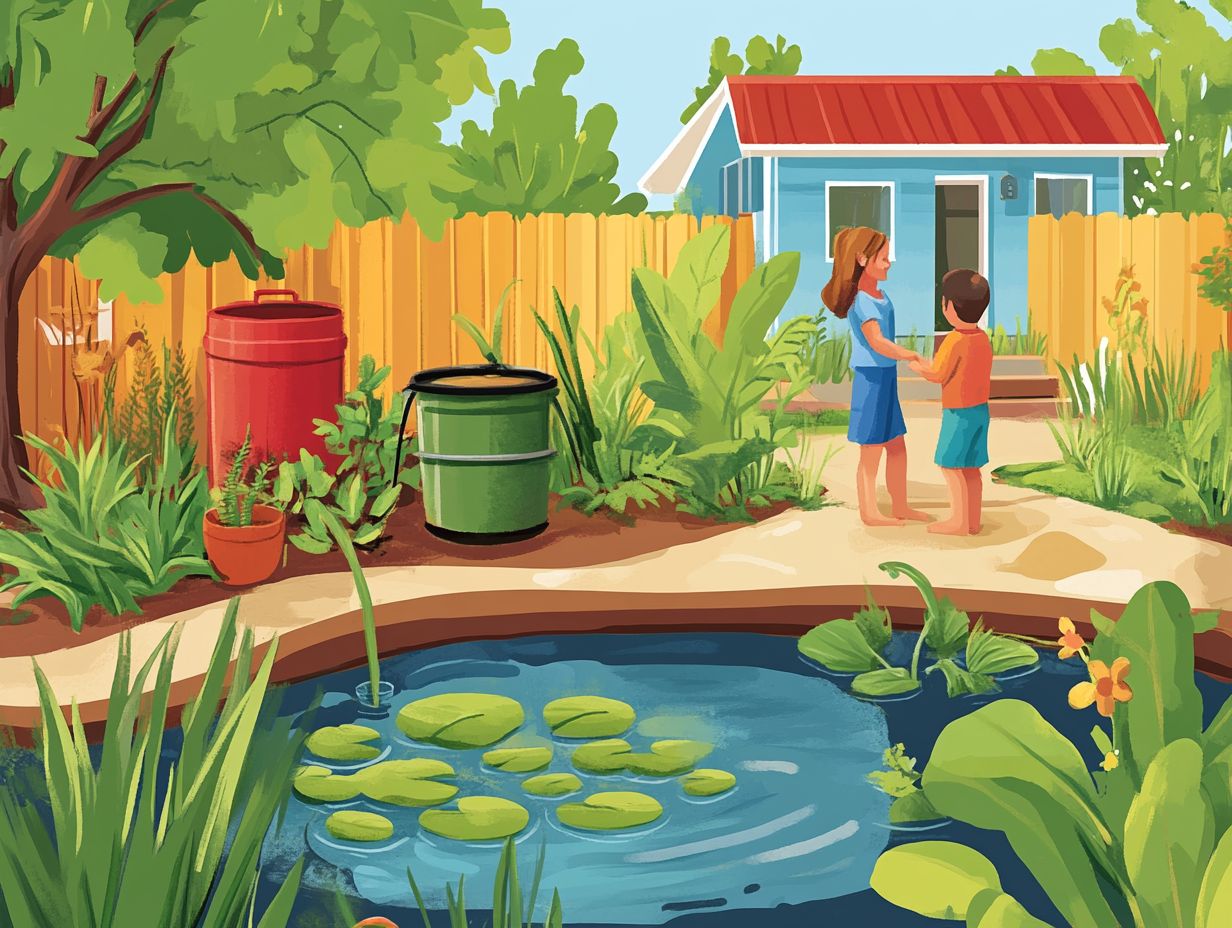
A sustainable water cycle is a method of collecting, purifying, and reusing water. This closed-loop system minimizes the need for external sources and has a positive environmental impact.
Creating one at home is essential for conserving water resources, reducing utility bills, and promoting environmental sustainability.
How can I collect and store rainwater for my sustainable water cycle at home?
Collecting rainwater is a fantastic way to save resources! You can easily install a rain barrel or cistern connected to your downspout or gutter system. The collected rainwater can then be used for gardening, watering plants, and other non-potable purposes.
What are some simple ways to purify and filter water for a sustainable water cycle at home?
You can purify and filter water using natural methods such as boiling, distilling, or using a ceramic filter. Consider renewable energy options for your purification systems. Investing in a small-scale water treatment system or combining methods can maximize effectiveness.
Can I reuse greywater in my sustainable water cycle at home?
Yes! Greywater, which is water that’s already been used (like from washing dishes, doing laundry, or showering), can be reused in your sustainable water cycle. However, it should not be used for drinking or cooking unless properly treated, promoting habitat restoration.
How can I reduce my water consumption and promote a sustainable water cycle at home?
It s crucial to reduce your water consumption now. Fix leaks, take shorter showers, and use low-flow fixtures to make a difference today! You can also collect and reuse water from activities like washing fruits and vegetables or rinsing dishes.
What are some additional benefits of creating a sustainable water cycle at home?
A sustainable water cycle not only conserves water and lowers utility bills, but it also improves soil quality, boosts plant growth, and reduces flooding risks in your neighborhood, as detailed in our guide on how to manage water in urban permaculture.

